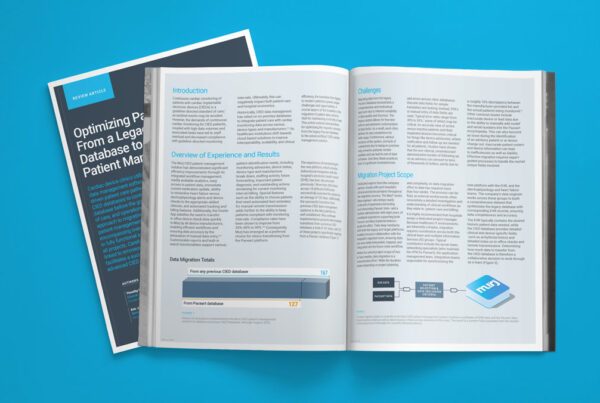In the ever-evolving world of cardiac rhythm management, the quest for standardization is a constant challenge. Repeatable and consistent device reporting and alerts are the goal of every care provider. Despite industry efforts, CIEDs continue to report AF episodes in their own unique ways.
Ongoing innovation in CIED device features, capabilities, and sensitivities yields distinct results across the device and manufacturer spectrum, notably in the context of device-indicated AF. Physician findings may differ from device indications, with variations based on device and manufacturer. This prompted a study to examine the frequency of disparities between device and clinical assessments and identify prospects for enhanced consistency and standardization.
Working in close collaboration with a Murj customer, Murj Analytics Engineer Megan McCabe initiated this study. Her objective was to quantify and compare physician-indicated and device-indicated AF across two patient segments and by device manufacturer.
McCabe analyzed data from over 100,000 de-identified AF transmissions that were clinically reviewed and managed on the Murj platform. She presented her findings at Heart Rhythm 2023 in New Orleans this past May. Now, Murj is making the study available for download as a white paper.
Key takeaways
- The study analyzed over 11,000 patients with pacing devices. A subset of that population included over 3,000 patients who are pacer-dependent and/or have complete heart block.
- Clinician-indicated AF occurred in about 30 percent of the transmissions, with 70 percent of patients having at least one AF-labeled transmission.
- Device-indicated AF showed a similar rate of about 30 percent of transmissions, but only 60 percent agreed with the clinician’s indication.
- Different device manufacturers had varying rates of device-indicated AF, as well as differences in sensitivity and specificity.
- Standardized clinician notes, as well as minimizing over-identification of AF and unnecessary medication initiation, can go a long way toward improving the identification and management of AF.
In her own words
Overall, the study findings were that you can use third-party data like Murj to standardize clinician notes at the transmission level and compare that to more standardized findings from devices. So we have a unique opportunity to implement the logic, standardize, and make these comparisons.
About the author
Megan McCabe is an analytics engineer at Murj. Based in San Francisco, she is passionate about providing clinicians with access to clear, timely analytics for both day-to-day use and research purposes. McCabe graduated from Dartmouth College with a bachelor’s degree in biomedical/medical engineering.





